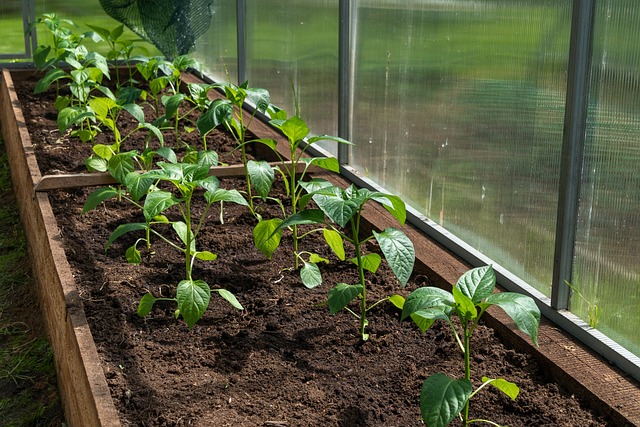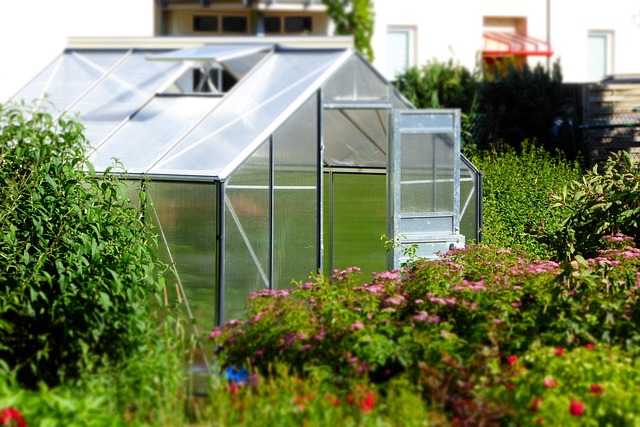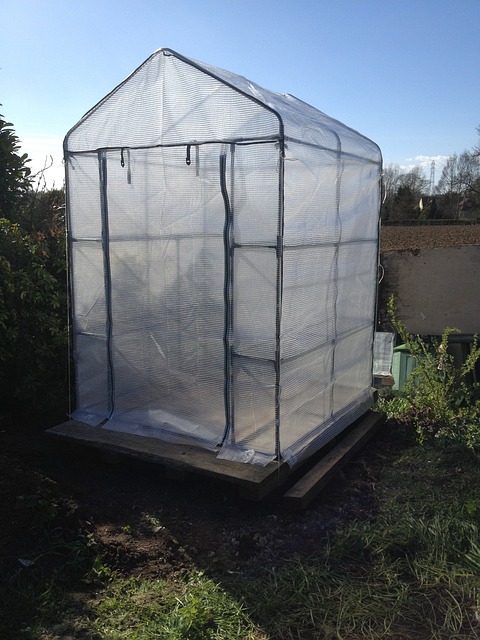Thinking about setting up a small greenhouse but not sure where to start? Whether you’re growing tomatoes through winter or starting seeds early in spring, a mini greenhouse is one of the best upgrades you can make for your garden. In this guide, I’ll walk you through exactly how to choose, set up, and get the most out of your first small greenhouse — even if you’re short on space or budget. How to set up a small greenhouse.
Check out my ultimate grow guide here for everything to grow

Choosing the Perfect Location
The success of a greenhouse largely depends on where you place it. Getting it right means your plants will thrive; get it wrong, and you may face an uphill battle in maintaining a healthy environment for your plantings. Here’s what you need to account for when scouting the perfect spot.
First up, sunlight is your greenhouse’s best friend. Most plants demand a good six hours of direct sunlight, so aim for a location that basks in plenty of light throughout the day. Consider the path of the sun across your property and be mindful of potential shade from buildings, trees, or fences.
Access is another crucial factor. You’ll need convenient entry, not just for yourself but for moving supplies in and out. Also, consider the proximity to water sources, electricity, and other utilities. It’ll make a significant difference when you need to water plants or install heating or cooling systems.
Last but not least, ensure you’re working with level ground. A flat surface makes building the structure simpler and more stable. If you don’t have level land, think about excavation or using foundation materials to even things out.
With the ideal location secured, you’re ready to move into the nitty-gritty of designing your greenhouse. This next phase is where you focus on tailoring your greenhouse to fit not only your gardening goals but also the particular demands of the plants you plan to nurture.

If you want to grow some herbs head over to my page
Designing Your Greenhouse
When it comes to setting up your small greenhouse, thoughtful design is key to its effectiveness. Selecting the right size is my starting point; you’ll want to consider the space available in your yard and the variety of plants you intend to grow.
The style of your greenhouse is just as crucial. You might prefer a lean-to that attaches to an existing structure, or a freestanding one if space allows. Each style has its benefits, from ease of accessibility to how it interfaces with the environment.
Now, let’s talk about what’s covering your greenhouse. Glass is traditional and offers excellent light transmission, but polycarbonate panels are gaining popularity for their durability and insulation properties. As for plastic coverings, they are the most economical option and can be easily replaced if damaged.
I also pay special attention to ventilation when designing a greenhouse. Proper ventilation is a lifeline for plants, balancing the temperature and humidity levels. Include roof vents, side vents, or automatic vent openers to keep air circulating.
Remember, temperature control is an inseparable component of a greenhouse. Too hot or too cold, and your plants suffer. Beyond natural ventilation, electric fans, heaters, or even shade cloth might be necessary, depending on your climate.
Transitioning to the assembly stage is exciting, as it brings your design to life. In the next section, I’ll guide you through the assembly process. From laying the foundation to securing the structure, you’ll learn how to construct a greenhouse that stands the test of time and weathers all seasons.

Greenhouse Assembly: A Step-by-Step Guide
Setting up a small greenhouse might seem like a daunting task, but with clear instructions, it’s quite manageable. I’ll walk you through the basics to help you get your greenhouse up and standing.
First up, prepare your foundation because it’s crucial for the longevity of your greenhouse. A stable base will prevent structural issues down the line. Lay down a solid foundation, whether it be concrete, pavers, or treated wood.
From there, it’s time to assemble the frame. Follow the manufacturer’s instructions carefully to ensure each part is fitted correctly. Anchoring the frame to the foundation is essential to withstand weather conditions. Use the right tools to secure your greenhouse effectively.
With the frame set, cover it with the chosen material. If you’re using panels, align them properly before securing into place. For a plastic cover, make sure it is taut to avoid any flapping that could weaken the structure.
Next, install the shelving units strategically to optimize space. Think about the types of plants you’ll be growing and their spatial requirements. Efficient water systems are vital, too – drip irrigation or a soaker hose can keep your plants hydrated without much waste.
Finally, consider how you’ll introduce light into your greenhouse. Natural light is the goal, but in winter months or for extended hours, grow lights can supplement your needs.
Once it’s all set up, you’re on to the fine tuning – maintaining a healthy environment for your plants. There will be cleaning, managing humidity, and making friends with some beneficial insects, which will be your best allies against unwanted pests.

Remember, a greenhouse is more than a growing space; it’s a commitment to your plants’ environment. The efforts you put into maintaining this specialized garden will be reflected in the health and yield of your plants. Happy gardening
For a more information about greenhouses head over here to wikipedia
How do you organise a small greenhouse?
Choose Compact Plant Varieties
- Select dwarf or compact varieties of plants that require less space to grow.
Vertical Gardening
- Use hanging baskets or tiered shelving to maximize vertical space.
- Grow vining plants like tomatoes or cucumbers upwards using trellises.
Optimise Plant Arrangement
- Place taller plants at the back and shorter ones at the front to ensure sunlight reaches all plants.
Use Small Containers
- Opt for small pots and containers that fit well together.
- Utilize stackable trays or shelves for growing herbs and small vegetables.
Group by Watering Needs
- Cluster plants with similar watering requirements together to simplify maintenance.
Implement Simple Irrigation
- Use self-watering containers or a drip irrigation system to efficiently water plants.
Monitor Environment
- Install a small thermometer and hygrometer to track temperature and humidity levels.
Regular Maintenance
- Keep plants tidy by removing dead leaves and spent flowers regularly.
- Rotate plants periodically for even light exposure.
Label Plants
- Use small plant markers or labels to identify different varieties.
Utilize Wall Space
- Install hooks or small shelves on walls to hang tools and supplies.
Maintaining a Healthy Greenhouse Environment
After you’ve set up your greenhouse, keeping it in top condition is what ensures your plants will thrive. Consistent maintenance is key. I can’t stress enough the importance of regular cleaning – it helps prevent pests and diseases, which can quickly become greenhouse nightmares. Keep both the interior and exterior of the greenhouse clean, and don’t forget to disinfect tools and pots to minimize the risk of contamination.
Monitoring is a daily task. You’ll want to keep a close eye on the temperature and humidity levels. Plants are quite sensitive to their environment, and the controlled climate of your greenhouse is a major reason why they can flourish. Small fluctuations can have big impacts, so an accurate thermometer and humidity gauge are essential tools.
Last but not least, introducing beneficial insects to your greenhouse can be a natural way to combat pests. Ladybirds and predatory mites are just a couple of allies in maintaining the delicate ecological balance within your controlled garden space. Be aware, though, that this requires understanding which insects are beneficial and how to sustain them.
Remember, a greenhouse is more than a growing space; it’s a commitment to your plants’ environment. The efforts you put into maintaining this specialized garden will be reflected in the health and yield of your plants.
Happy gardening!!
Follow to stay up to date with new posts!
Last Updated on June 5, 2025 by Mitch

